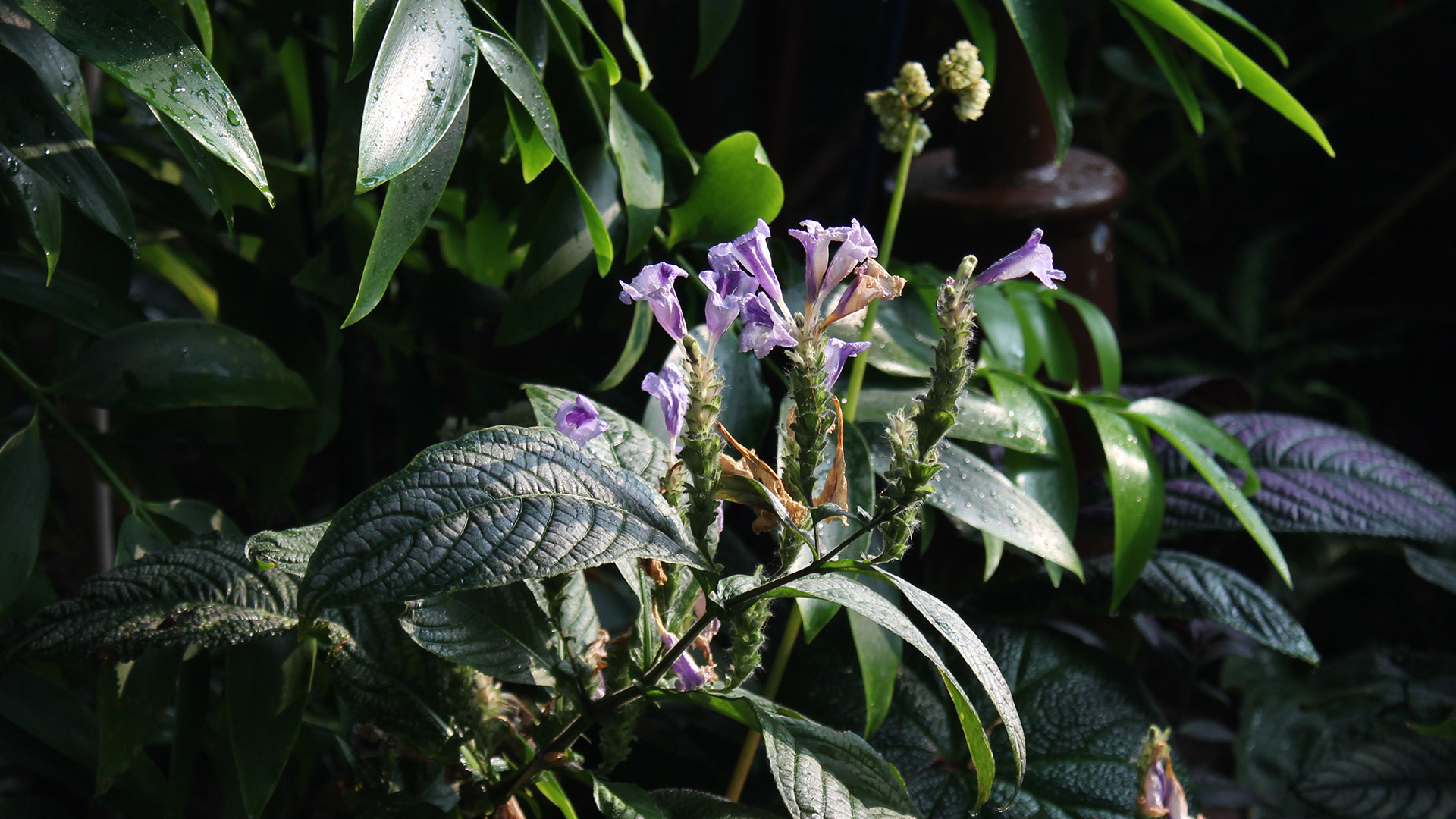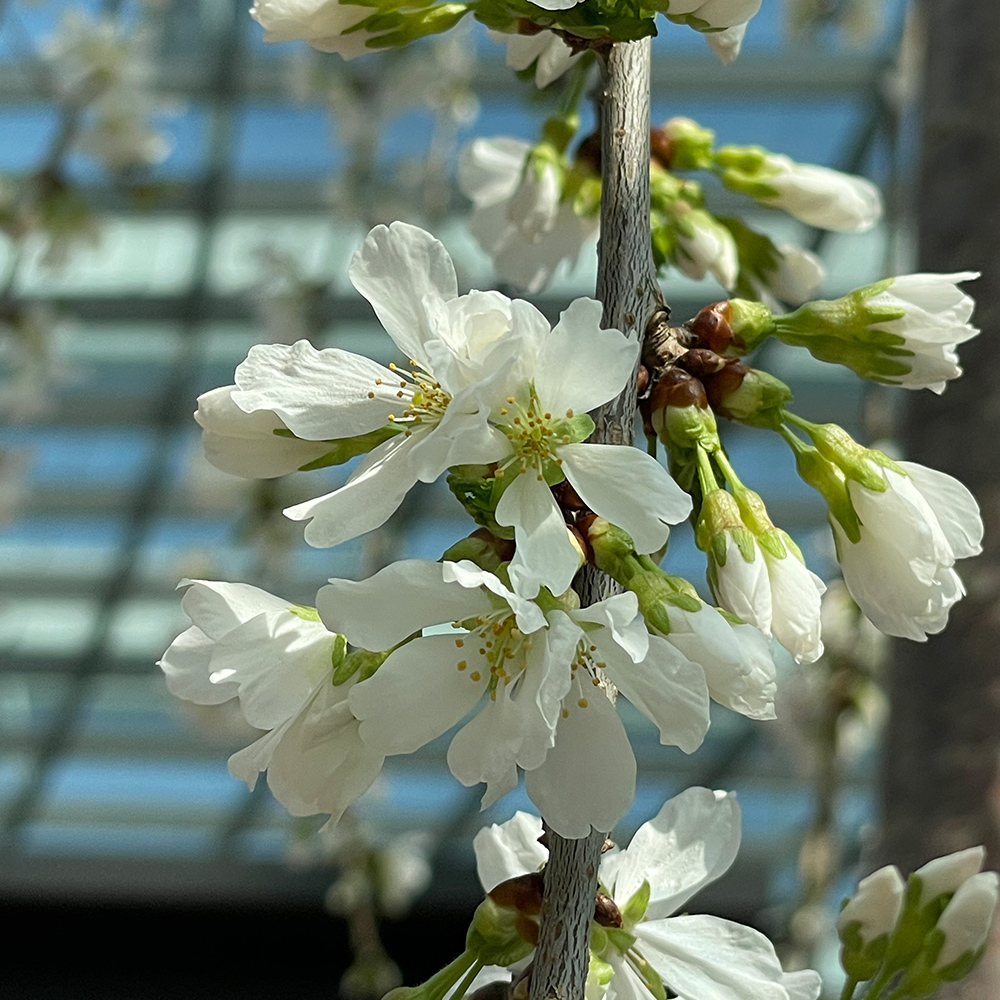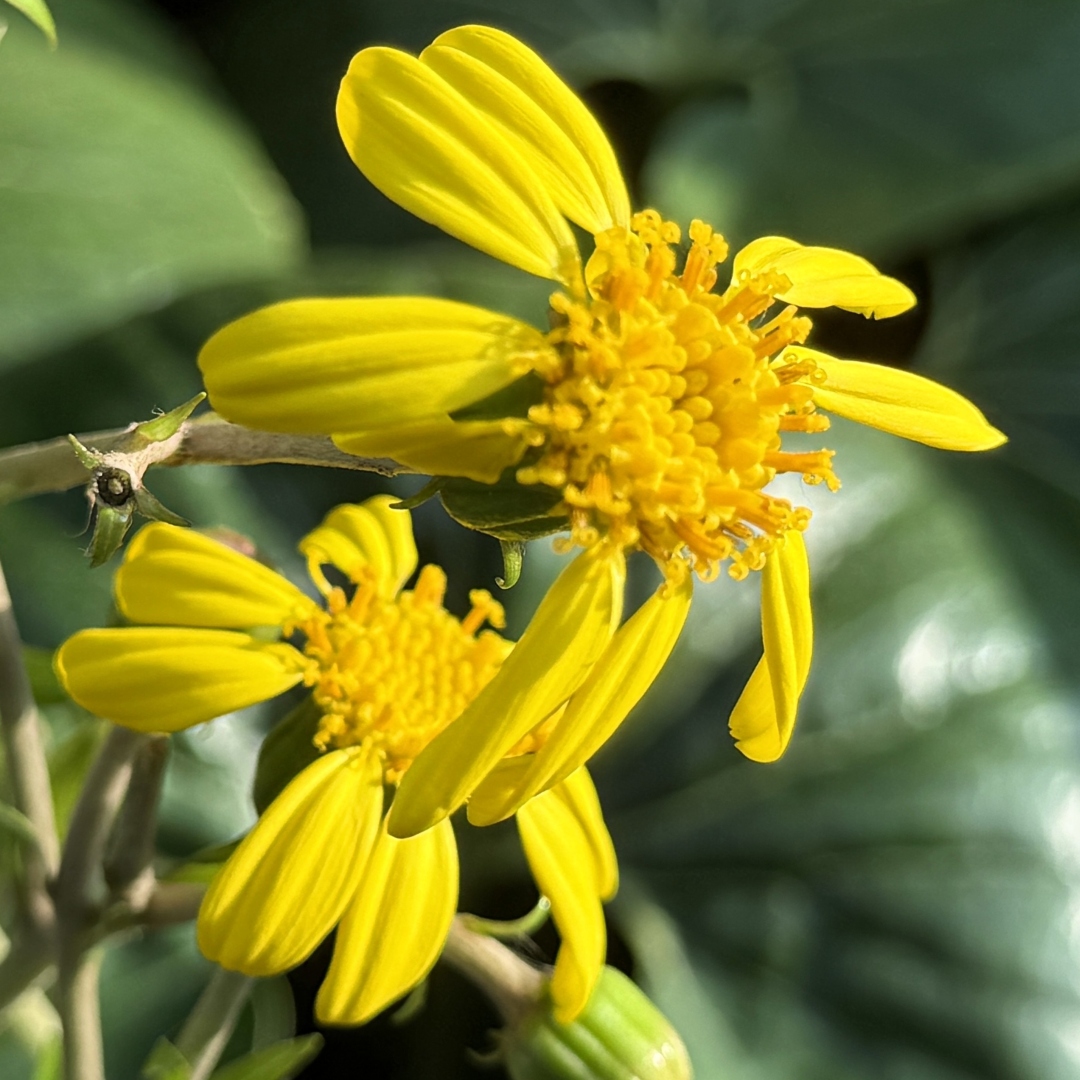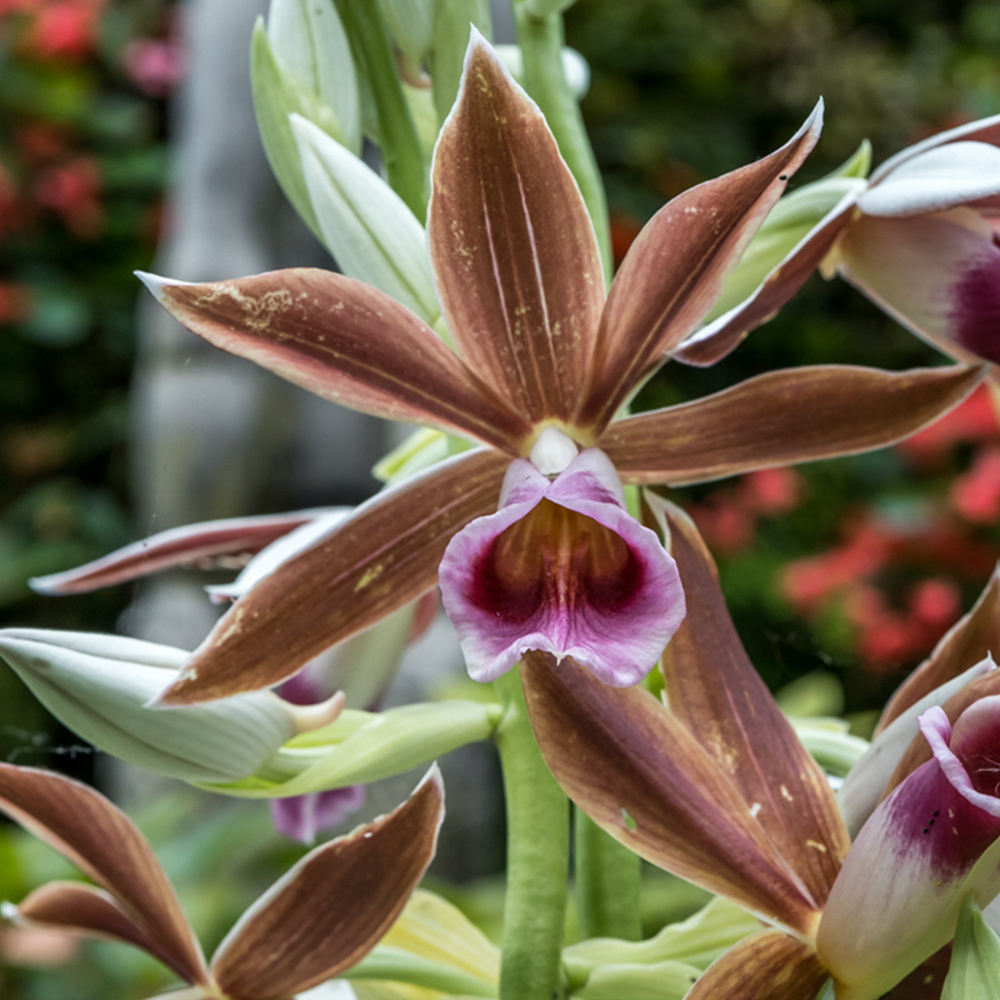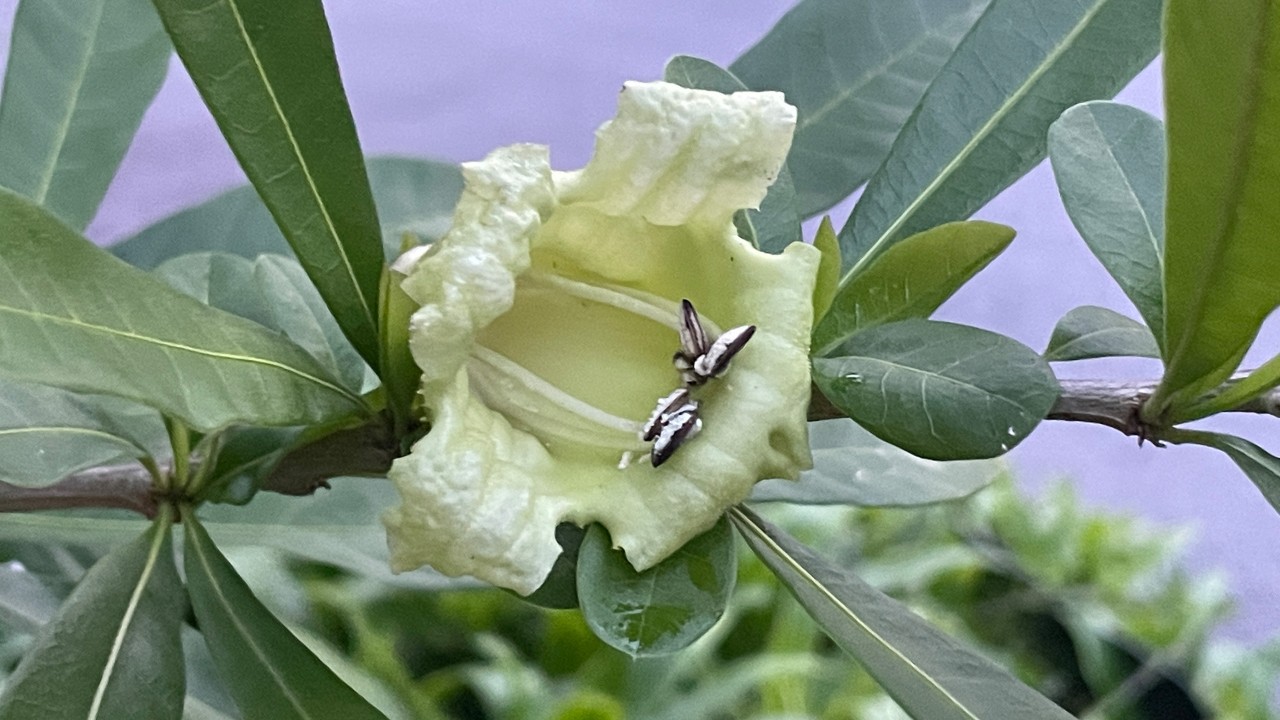
Only reaching four to ten meters in height, what the calabash tree (Crescentia cujete) lacks in stature, it makes up in utility, both to humans and wildlife! A member of the Bignoniaceae family, which includes many popular, if exotic, flowering street trees in Singapore, such as: golden bells (Tecoma stans), pink trumpet tree (Tabebuia rosea), and blue jacaranda (Jacaranda mimosifolia), the calabash tree is known more for its spherical or ovular, green, hard-shelled fruits that can reach up to 20cm in diameter.
The flowers which precede fruit development are much more inconspicuous; not only are they a pale greenish to cream in colour, but they also are night-blooming, opening in the early evening. Unlike many plants which produce flowers at the tips of young shoots or branches, the calabash tree bears most of its flowers directly on the trunk or old, woody branches – a phenomenon called cauliflory. Floral placement on the trunk and large branches free from leafy obstruction facilitates pollination by bats, which come for the copious volumes of dilute nectar produced by the flowers.
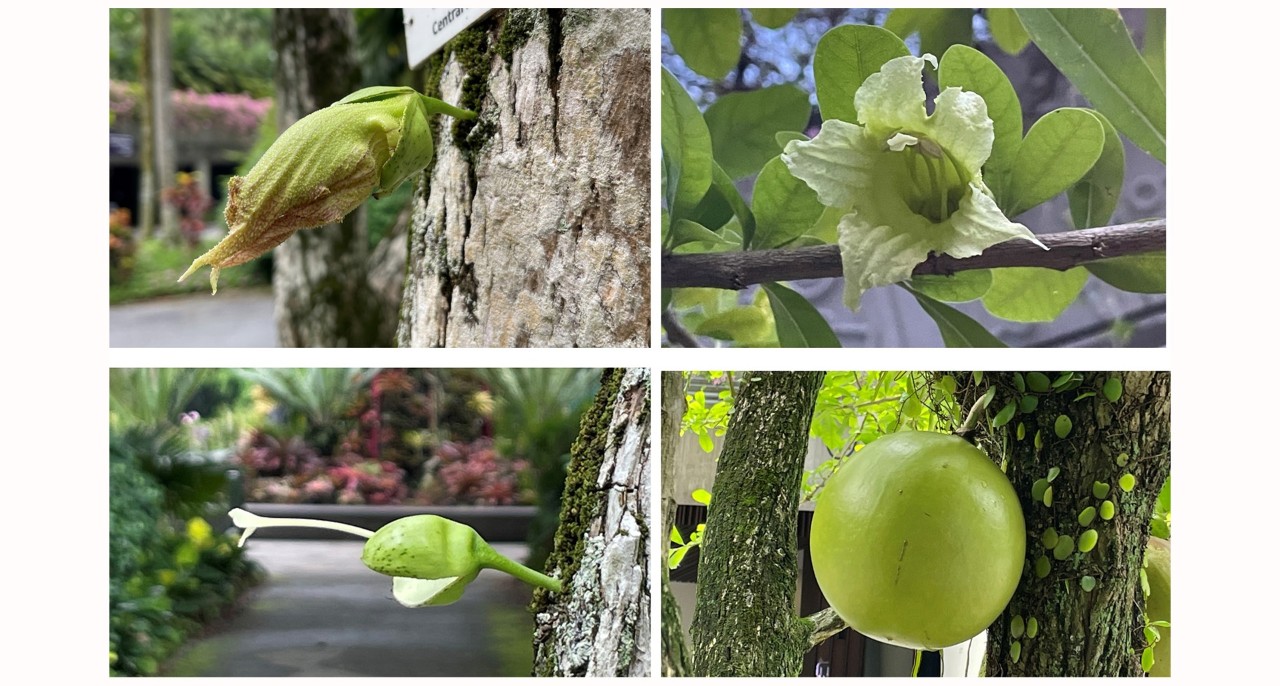 Floral and fruit development of the calabash tree, from mature flower bud (top left) to open flower (top right), pollinated flower with dropped corolla, showing long, persistent style (bottom left), and maturing fruit (bottom right).
Floral and fruit development of the calabash tree, from mature flower bud (top left) to open flower (top right), pollinated flower with dropped corolla, showing long, persistent style (bottom left), and maturing fruit (bottom right).
A tree of near-infinite uses, people have spread the calabash tree so widely throughout its native tropical American region and beyond to the global pan-tropics that it is difficult to determine exactly where the calabash tree originated! Wild populations of the species do exist in the West Indies and tropical Americas but may actually be feral trees descended from cultivated specimens.
For centuries, people have been using the hard, thin shell of this tree’s fruit to make canteens, scoops, and all sorts of cups, bowls, and storage containers. Perhaps most famously, jicaras – traditional cups used to serve mezcal, tequila, and ceremonial cacao, are made out of half a fruit shell and often beautifully carved and decorated. Musical instruments, such as maracas and other rattles, filled with small seeds or stones, and the resonator of the berimbau, a single-stringed Afro-Brazilian instrument used to accompany capoeira practices.
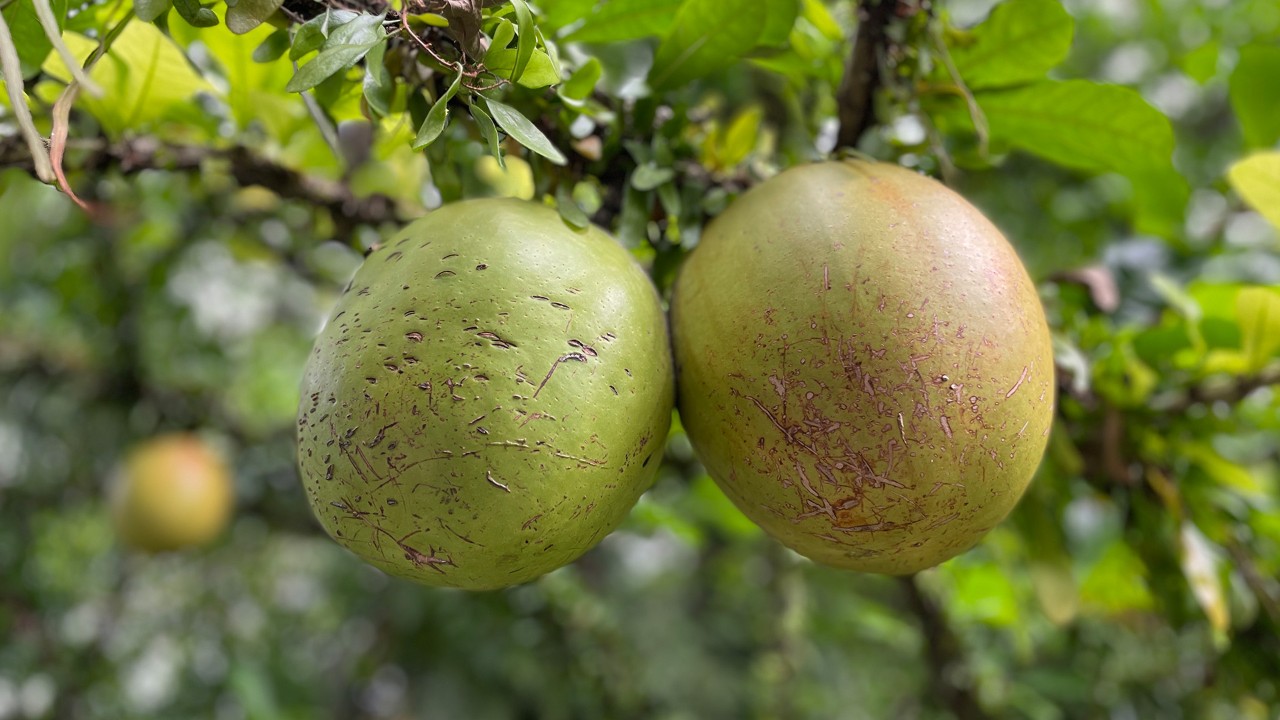 The thin, hard shells of the large fruits are dried, cleaned, and carved into cups, bowls, and an assortment of other containers. Leaves, bark, fruit pulp and seeds also have many medicinal properties.
The thin, hard shells of the large fruits are dried, cleaned, and carved into cups, bowls, and an assortment of other containers. Leaves, bark, fruit pulp and seeds also have many medicinal properties.
Of course, the first question the comes to mind when contemplating the large fruits are their edibility! While the fruit pulp is generally considered inedible, if not slightly toxic, the young fruits can be pickled, and the seeds or pulp of the roasted fruit made into syrups with aloe (Aloe barbadensis) leaf pulp, cinnamon, and sugar and taken as a preventative against colds or as a cough syrup.
The leaves, fruit, bark, and seeds have been used in traditional medicines around the world to treat a range of ailments from high blood pressure, snakebite, asthma, diabetes, and even cancer. Modern medicine has backed up many of these traditional uses, with the fruit extract confirmed to inhibit the effects of venom from a species of viper, leaf and bark extracts found to be anti-inflammatory, and fruit and leaf extracts having hypoglycemic properties, lowering elevated blood sugar levels in mice, among other findings!
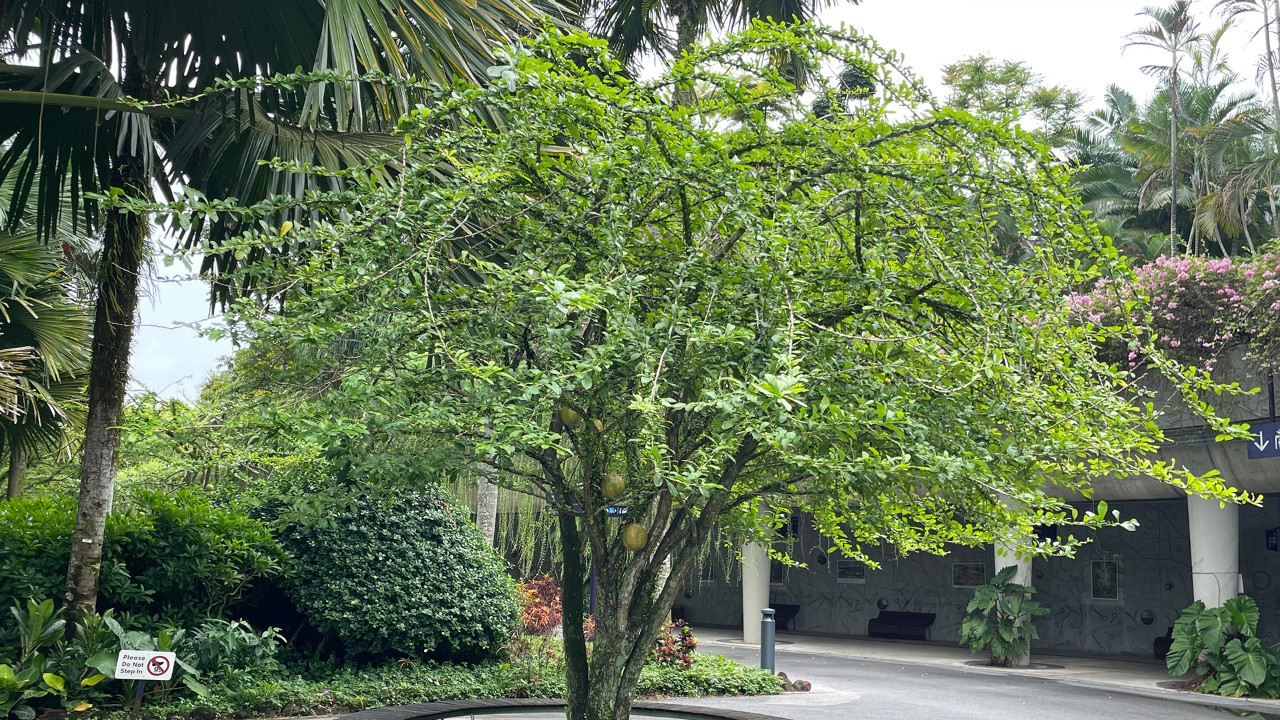
Find several calabash trees, as well as Crescentia alata, a related species with winged leaves, purple flowers, and smaller fruit in Supertree Grove, right outside the Calabash Room near Jurassic Nest!
Written by: Janelle Jung, Senior Researcher (Research and Horticulture)
A transplanted pake (Hawai'i-born Chinese), she's finding her own Singaporean roots. Every plant has a story, and Janelle helps discover and share these with colleagues and guests, hoping to spark a mutual plant passion! Ask her what plant she named her cat after!
